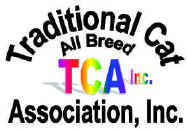AN ANSWER TO PET OVERPOPULATION
By: Lisa
Guzman
(The following article may or may not reflect the position
of TCA, INC, but I thought it was well written and thought provoking.)
Furry, loveable cats and dogs own millions of people in the
United States and there are million of cats and dogs that are homeless or living
out the remainder of their lives in an animal shelter.
Pet overpopulation is a serious problem in the United States.
“In seven years, one female cat and her offspring can theoretically
produce 420,000 cats. In six years,
one female dog and her offspring can theoretically produce 67,000 dogs (HSUS Pet
Overpopulation Estimates 1).” Our furry little companions aren’t to blame
for pet overpopulation, people are. Just
the same, people are also part of the solution.
There are many people nationwide who’s hearts melt when
they see an adorable little kitten or puppy and then they decide on impulse to
bring one into their home without full knowledge of how to care for one.
This kind of impulse is what creates a problem, because some people work
a full day and the pet will be left home alone for long periods of time
throughout the day leaving the pet no other choice but to urinate and defecate
on the floor (just one example that upsets many pet owners).
People get upset with this type of behavior and sometimes give up on the
pet. Some people will abandon the pet or others may try to give it away. If a
person abandons a pet that has not been spayed or neutered, by animal instinct
it will go try and find a mate to procreate, thus contribution to pet
overpopulation. This is where
people need to intervene, establish laws and set up sterilization programs to
reduce the number of unwanted cats and dogs.
People have domesticated cats and dogs for thousands of
years. Reasons vary among people.
Some like the companionship and unconditional love dogs give, others
prefer the challenge of winning a cats love and trust.
Then there are also some that could
not lead normal lives without the assistance of a well-trained dog.
Whatever the reason may be, people have greatly contributed to a pet
overpopulation problem that threatens the lives and well being of these furry,
little animals. “An estimated 4
to 6 million dogs and cats are euthanized in America’s animal shelters each
year because they are not wanted by anyone, anywhere (Pet Overpopulation Fact
1).”
Places that we can see where pet overpopulation is a
serious problem are in low-income neighborhoods.
The reason is that people who live in these neighborhoods simply can’t
afford to have their pet spayed or neutered or there are some who feel they can
make money by having a kitten or puppy mill.
When their cat or dog has a litter one might first resort to selling
them. If that doesn’t work one
may try to give them away to someone, anyone who may not be able to afford the
expenses of a pet and as a last resort abandon the pets only to have the
survivors contribute to pet overpopulation.
Shelters take in kittens and puppies when people bring them
in, however, if the litter came from the person’s pet some shelters charge a
fee. To avoid the fee people dump
them off. These stray cats and dogs
roam about the community without vaccinations, become exposed to diseases, fight
for territory, food and pose as health threats to wildlife and people in the
community.
Each year, aggressive dogs attack more than 4.4 million
American, including more than 1.2 million children.
Of these attacks, 800,000 dog bite victims require medical attention.
During 1995 and 1996, 25 people died after being bitten by a dog.
Twenty of those were children under 12 years of age (Cargill &
Thorpe-Vargas1).
I’ve talked about all the factors that contribute to pet
overpopulation, now let’s look at how we can reduce the numbers of unwanted
pets in America. The only way to
reduce the number of unwanted pets is to have cats and dogs spayed or neutered.
People need to be informed about the facts and myths of spaying and
neutering. In fact there are only
positive benefits to having a cat or dog spayed or neutered.
Here are a few of them: “eliminate
litters, which add to pet overpopulation, lowers incidence of breast tumors,
(especially if done before the first heat cycle), false pregnancies and uterine
infections and lowers incidence of testicular tumors and prostatic disease
(Spaying and Neutering 2).” People who take their pet in for this operation
contribute to the longevity and health of their pet and are helping reduce the
number of unwanted pets in their community.
Spaying and neutering is the solution to pet
overpopulation, however we run into a problem because, like I stated earlier,
some people simply can’t afford to have the operation performed. This is where people, and the community, need to pull
together and work together. Sterilization
programs need to be set up in communities where pet overpopulation is a serious
problem. Only then we will see some results.
These programs can offer price reductions to low income
families or vouchers can be given to people who adopt pets from private
networks. Veterinarians can also help in this crusade by offering their services
for a fraction of the price or free of charge.
“In fact, in those town and cities that have implemented such programs,
we’ve already seen the number of companion animals who had to be euthanized
decline by 30 to 60 percent (Is the Problem of Pet Overpopulation Serious?2).”
I live in Germany and have yet to see a stray dog.
Maybe America should adopt some of the German ways of acquiring a cat or
dog. If someone wants to acquire a
cat or dog one can’t find one at a local pet store. One will have to go to an
animal shelter or a local breeder. I
feel this system works really well because most shelters (in Germany) require
the pet owner to have their adopted cat or dog spayed or neutered within a
certain time frame. Not only that, but the animal shelter workers can make pop
visits to the pet’s new home. If
the new owner has failed to abide by the agreements, the pet can be taken away.
Local breeders work together as well to ensure they are not contributing
to pet overpopulation by having a contract that a new owner must have their cat
or dog spayed or neutered before the new owner can receive the pedigree
paperwork for their pet.
America needs to establish stricter laws for pet owners and
breeders. People who purchase a cat
or dog for breeding should have a license to do so and treat the animal in a
humane way and provide adequate housing for their breeding animals.
People who do not have a license to breed and who set up kitten or puppy
mills could be fined, have the animals taken away, and be restricted from owning
a cat or dog ever again. Most
States require people who own a pet to have them licensed and up to date on
rabies vaccinations. So, why not
require all cats and dogs purchased as a pet to be spayed or neutered no later
than four months of age. People who
do not own or like cats or dogs are paying greatly for the pet overpopulation
problem America is facing today. Millions of tax dollars are spent each year on
the pet overpopulation problem. To save people’s money, who not establish
these laws I’ve stated above nationwide?
Communities that have implemented such programs have
already seen positive results. Those
results are proof that people
working together can and hopefully will, one day solve the pet overpopulation
problem.
Works cited: Cargill, John and Thorpe-Vargas, Susan, “The
Liability of Dog Ownership: Insurance Options” Internet, January 28, 2002. www.blountweb.som/petcare/dogliability.htm.
“HSUS Pet Overpopulation Estimates” HSUS Programs. Internet, January
28, 2002. www.hsus.org/programs/companion/overpopulation/op_faq.html.
“Is the Problem of Pet Overpopulation Serious?” HSUS Programs.
“Spaying and Neutering”, Animal Welfare. Internet, January 28, 2002.
www.okc-cityhall.org/AnimalWelfare/Spay_Neuter.html
|

 The
Traditional Cat Association,
Inc.©1987®TM
Official Website
The
Traditional Cat Association,
Inc.©1987®TM
Official Website